Maybe you’ve heard of those digital images that sold for millions of dollars at one point in time, or maybe you’re an enthusiast who just wants to learn more about NFTs. Regardless of how you heard of them, many people are curious about the NFT phenomenon. If you are one of these people, look no further than this guide on non-fungible tokens.
KEY TAKEAWAYS
➤ Non-fungible tokens (NFTs) are unique blockchain-based digital assets that represent ownership or rights to physical or digital items like art, audio, or real estate.
➤ NFTs rely on blockchain technology for immutability, provenance, smart contracts, and unique identifiers, often using off-chain storage for large files.
➤ NFTs gained attention due to speculative investments during the 2021-2022 bull market but hold practical applications in industries like real estate, intellectual property, and gaming.
➤ To trade or create NFTs, users need to create a crypto wallet, acquire cryptocurrency, and access NFT marketplaces like OpenSea or Rarible.
What are non-fungible tokens (NFTs)?
A non-fungible token is any blockchain-based digital asset that represents a unique item (physical or digital) or a set of rights or privileges. You most commonly see them as digital art or profile pictures, but they can also take the form of:
- Audio
- Video
- Tickets
- In-game items
- Collectible items
- Real estate
Most people are familiar with the concept of an NFT, whether they know it or not. For instance, the formal definition of a token is an item that symbolizes something else, like another item (physical or virtual) or an intangible concept. For instance, a gift is sometimes referred to as a token of one’s appreciation.
If you have ever purchased a house or a car, you will have received a deed or car title. The deed and the car title do not represent the house or car themselves; rather, they represent ownership over the house and car. An NFT is simply a digital representation of this concept.
Fungibility vs. non-fungibility
When discussing NFTs, many people get hung up on the term non-fungible and how it differs from fungible tokens. To understand this, we must first unpack the term fungibility because how can you understand what something is not if you don’t understand what it is?
Fungible means that individual units of the money don’t differ significantly from each other; one is as good as any other.
Lyn Alden, Broken Money
Fungibility is the property of a good or commodity whose individual units are interchangeable. In other words, when you pay for goods and services in dollars, whether it is a 5¢ piece, $50, or a $100 bill, you can use it to pay for that item.
On the other hand, non-fungibility means that something is unique and cannot be exchanged for something else of the same value. For example, when you buy a ticket for a concert, it represents the right to take part in the concert and a seat at the venue. Though the ticket may cost $25 or $100, you would not use it to purchase gas or food at the concert.
Because the ticket might represent a seat with a good view, it is unique, and you probably wouldn’t even trade it for another ticket that represents a seat within the same venue.
How do NFTs work?
There are many ways to explain how NFTs work. From a technical standpoint, NFTs can be likened to a webpage. Metadata is the information that describes the characteristics and functionality of an NFT. It includes details such as the appearance of the NFT, its unique features, and how it differs from other NFTs in the same collection.
For example, if an NFT is a book, the metadata would include details about the content of the book, the words on the pages, and the cover designs. In this way, NFTs are similar to webpage files in Web 2.0. Just as a webpage can be simple or complex, with various styles and layouts, an NFT can also contain a wide range of data and links to other datasets.
A webpage is just a collection of files stored on a server. Similarly, an NFT and its metadata are hosted on servers like IPFS or Amazon Web Services (AWS). In this way, NFTs are similar to modern webpages, which are likewise dynamic and responsive.
Key features of NFTs
As stated previously, NFTs differ in implementation; however, most, if not all, NFTs have a few features and components in common. Firstly, each NFT is tied to a token ID and record of ownership on the blockchain. In this way, they have two key features:
- Immutability: Once the NFT is created, its record and attributes are permanently recorded on the blockchain.
- Provenance: The blockchain provides a transparent and verifiable history of the NFT.
Secondly, each NFT typically has three components: how it behaves, authentication, and where it is stored.
- Smart contracts: NFTs are smart contracts. Smart contracts are self-propelled computer programs on the blockchain that follow a predetermined set of operations depending on the input. They determine NFT’s characteristics.
- Authentication via hash or URI: Each NFT has a unique identifier, typically in the form of a cryptographic hash or uniform resource identifier (URI). This component helps to authenticate the token’s metadata and makes it unique.
- Storage solution: Storing large files on some blockchains is typically inefficient and costly. Many NFTs rely on off-chain storage solutions like IPFS, Arweave, or AWS.
NFT implementations by blockchain

NFTs can differ not only differ in their attributes and implementation on the same blockchain, but they can also differ in implementation from blockchain to blockchain. To illustrate this point, we will take a look at NFTs on Bitcoin vs. Ethereum.
| Bitcoin | Ethereum |
|---|---|
| Stores data directly on-chain | Stores data and file off-chain |
| Uses scripts to create NFT | Uses smart contracts to create and determine NFT behavior |
| Creates a unique identifier using satoshis and Ordinal theory | Uses the ERC-721 and ERC-1155 standards |
| Uses the Ordinal protocol on top of Bitcoin to interpret metadata | Uses JSON format for metadata |
Ethereum
The most popular platform for creating NFTs is Ethereum. Ethereum NFTs typically conform to what is known as the ERC-721 standard. Although, the second most popular standard is the ERC-1155.
The ERC-721 is for single unique tokens, while ERC-1155 handles multiple token types (fungible and non-fungible) and batch operations, making it more gas-efficient.
On Ethereum, the non-fungible token itself resides on the Ethereum blockchain, and its metadata and linked files reside off-chain. Additionally, Ethereum NFTs typically use the JSON (Javascript Object Notation) format for metadata.

In the above image, you can see the metadata for what appears to be a purple flower dynamic NFT. It is located on IPFS. In the image below, you can see the actual rendering of that metadata, which is, in fact, a purple flower.
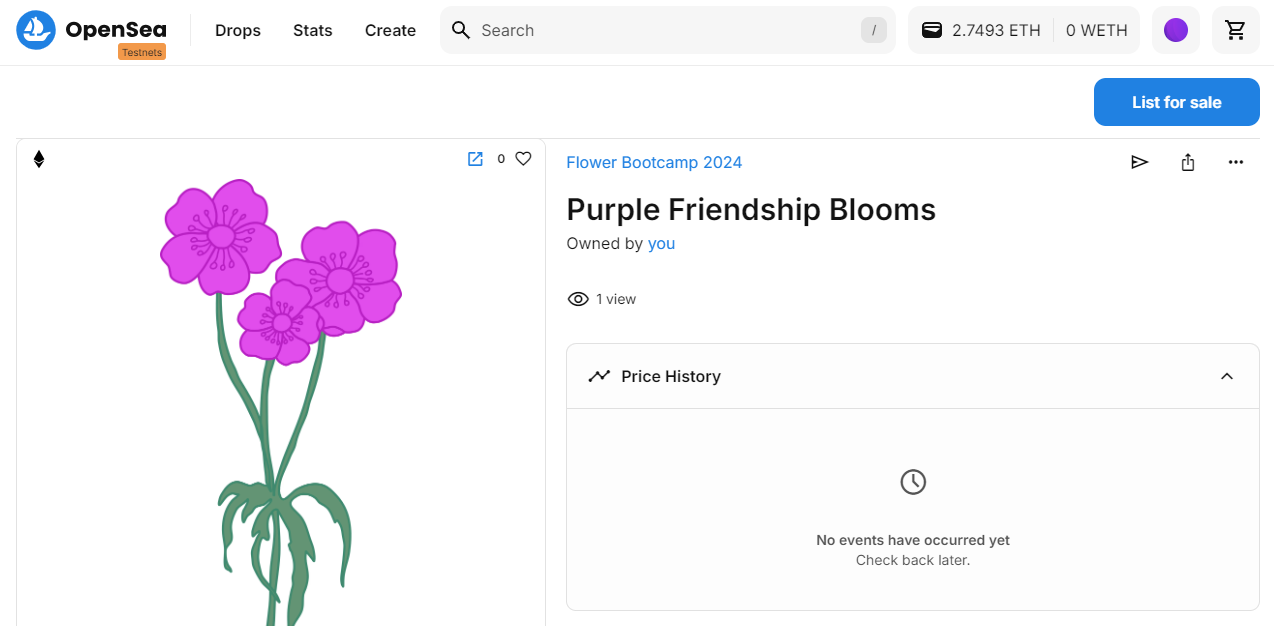
Bitcoin
While Bitcoin was not originally designed for NFTs, Ordinals have made it possible to host Bitcoin NFTs on its blockchain by embedding data directly into the smallest Bitcoin unit, satoshis (sats).
Ordinal Theory assigns each satoshi a unique identifier based on its position in the transaction history, similar to how NFTs have a unique token ID. This makes each satoshi trackable and technically gives them non-fungible properties.
The process of transforming these satoshis into NFTs is called inscription. Inscriptions attach data — such as text, images, or files — directly to the satoshi. As opposed to Ethereum, the data is stored entirely on-chain and does not require a smart contract for creation.
Because Bitcoin does not use smart contracts, rendering and interpreting the NFTs requires additional layers, such as the Ordinal protocol. This protocol translates the data into a useable NFT format, which allows integration into wallets and marketplaces.
Why are NFTs popular?
There are a few reasons that describe why NFTs are popular, mainly, speculation and utility.
Speculation
NFT trading peaked in late 2021 to mid 2022. This was due to a number of cascading reasons, but we can sum it up as speculation.

During the aforementioned time frame, the majority of the world experienced a low interest rate environment. Without going into too much detail, when central banks lower their interest rates, it is a signal for investors to go risk-on or take on riskier investments.
This can lead to increased asset prices because of the number of people putting money into assets like real estate, capital markets (e.g., stocks), or even cryptocurrency at the same time. In this way, their investments are a hedge against inflation, and appreciate against an inflating dollar. NFTs benefitted from a lot of this activity.
If all of this was too complicated to understand, then here is the main takeaway, NFTs became popular during the 2021-2022 bull market because of frivolous spending and investing, not necessarily because of their utility.
Utility
Although NFTs didn’t necessarily become popular because of their utility during the bull cycle, they entered the crypto scene with a lot of anticipation because of their potential uses.
Today, many businesses within and outside of the cryptocurrency market use NFTs as part of their business model, rather than selling the NFTs themselves, in many cases.
For example, some businesses may use NFTs to represent someone’s share in a real estate investment trust, a share for one’s rights over dividends, or, in the case of California, putting car titles on the blockchain.
You may also see many NFTs used for profile pictures (pfp) or as intellectual property (IP) for a brand. Regardless, NFTs have many properties that make them advantageous for practical applications for businesses.
History of NFTs
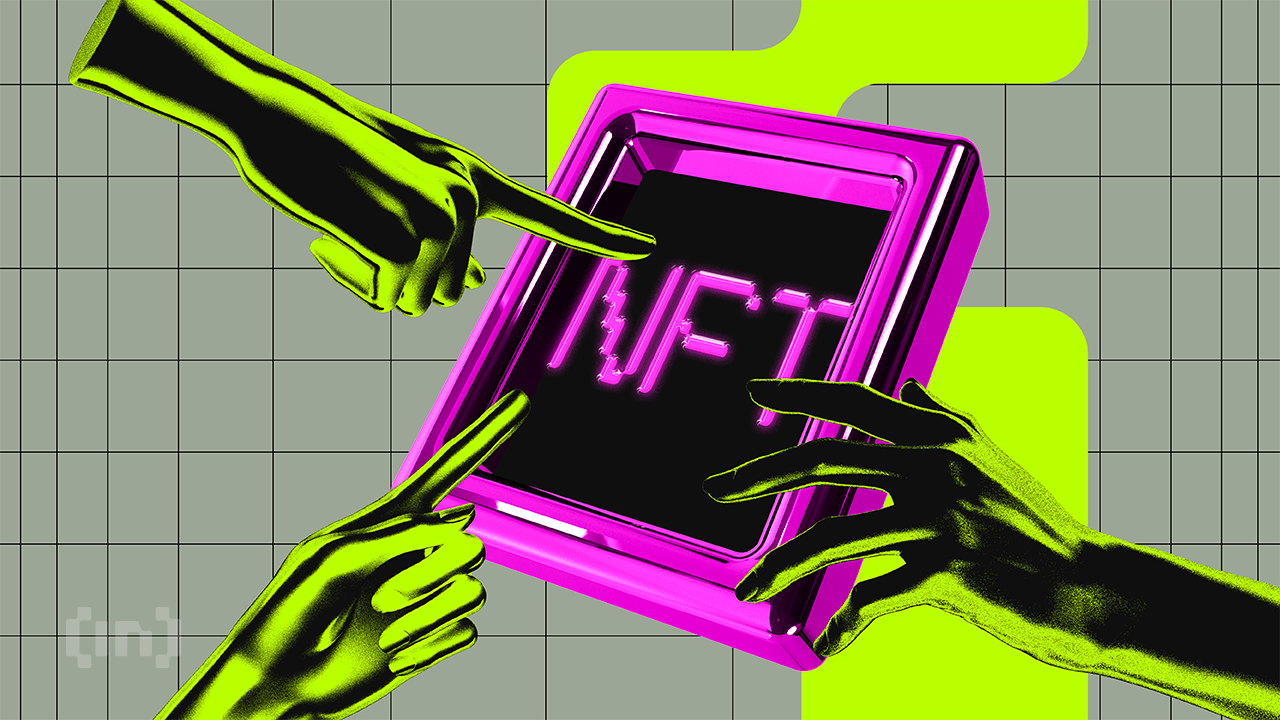
In hundreds of headlines about NFTs, the first thing one usually notices is their price, for better or worse. However, there is much more to this niche asset class, most importantly, its history.
Quantum
Most people recognize Quantum as the first NFT. Jennifer and Kevin McCoy created Quantum, which is a generative piece of art. At the time of its creation, there was no way to authenticate provenance for digital art.
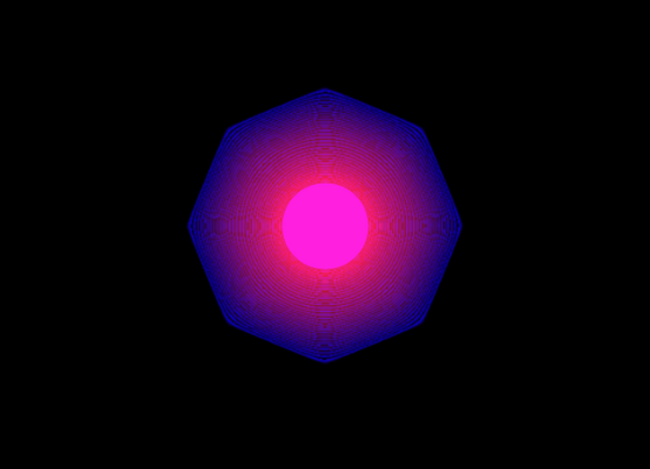
Together with Anil Dash, Kevin McCoy tokenized the Quantum NFT on Namecoin, a Bitcoin fork, in 2014.
CryptoPunks
CryptoPunks are 10,000 unique collectible images that exist on the Ethereum blockchain. These pixel pop art portraits of punk avatars are generated using an algorithm and tokenization.
Matt Hall and John Watkinson designed them in 2017, but they became popular in 2021. Because they were developed early in Ethereum’s history, they did not initially adhere to the ERC-721 standard but later supplied a wrapped version.

CryptoKitties
CryptoKitties is a blockchain-based game that allows users to gather, trade, and breed virtual cats. It was the first to use the ERC-721 token standard; however, Cryptokitties use the original version of the ERC-721 standard and not the community-formalized version.
In 2017, CryptoKitties grew so popular that it congested the Ethereum network, resulting in transaction delays and expensive gas fees.

Beeple’s EVERYDAYS
Beeple’s EVERYDAYS: The First 5000 Days is a digital artwork made up of a composite of 5,000 pictures created by the artist Mike Winkelmann (Beeple).
The piece depicts Beeple’s artistic development and delves into topics ranging from surrealism and humor to political and cultural critique. It was sold for $69.3 million at Christie’s in 2021, marking a watershed moment in NFT history.
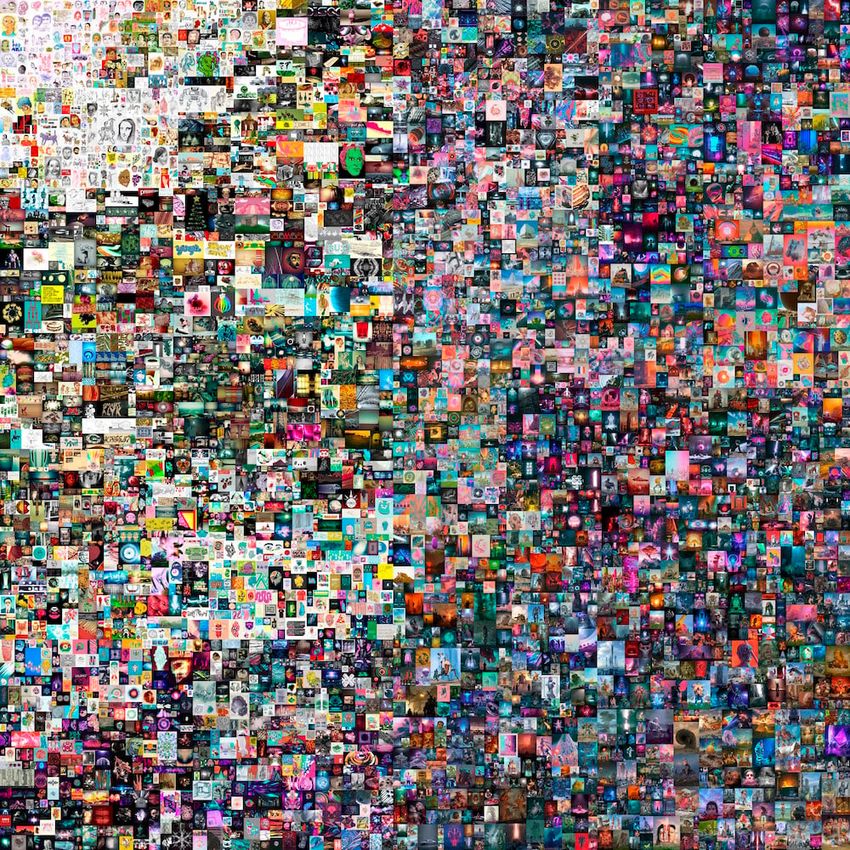
How to start trading in NFTs
NFT marketplaces are typically on Ethereum. They allow you to create, sell, and buy NFTs. Although other blockchains offer marketplaces, most NFT marketplaces are still hosted on Ethereum’s blockchain.
Therefore, for both buying and selling NFTs, we will demonstrate how using Ethereum. In summary:
- You must have a crypto wallet with some ETH in it, which is Ethereum’s native token.
- Find a marketplace, such as OpenSea, Rarible, etc.
- Connect your wallet and start buying and selling NFTs.
1. Get a crypto wallet
Download and install the MetaMask crypto wallet. It supports many major web browsers.
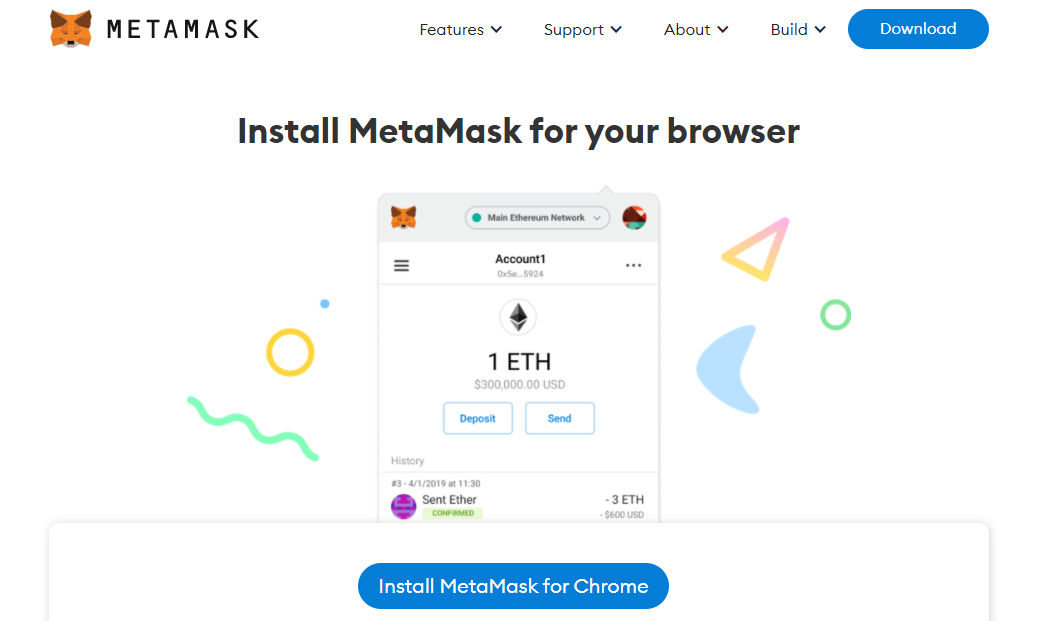
Once the installation is complete, your browser will now have a new extension. After clicking on “Get Started,” click on the “Create a Wallet” button.
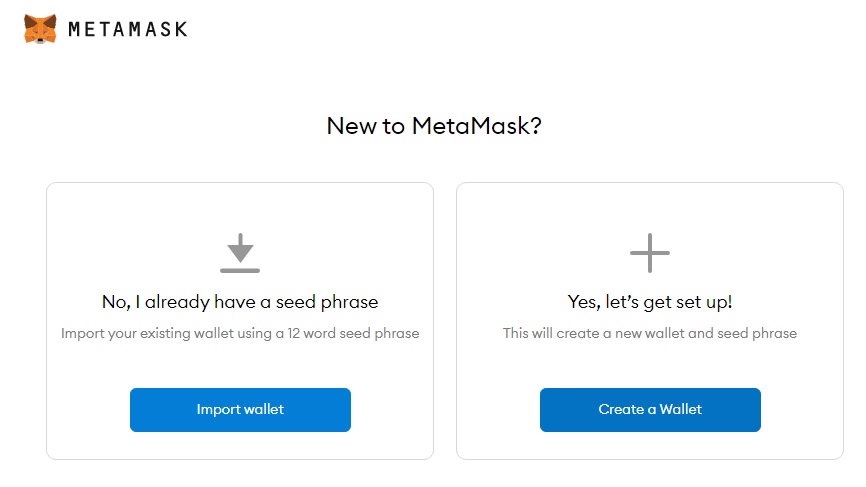
First, you will be asked to create a password for the wallet itself. However, your seed phrase will be of critical importance; it is the only way you can restore your crypto wallet and all the funds in it if something happens to your device.
Store it safely on a piece of paper or use a hardware wallet for cryptocurrencies. Next, click on the icon in the upper right corner with three vertical dots, then click on “Account details.”
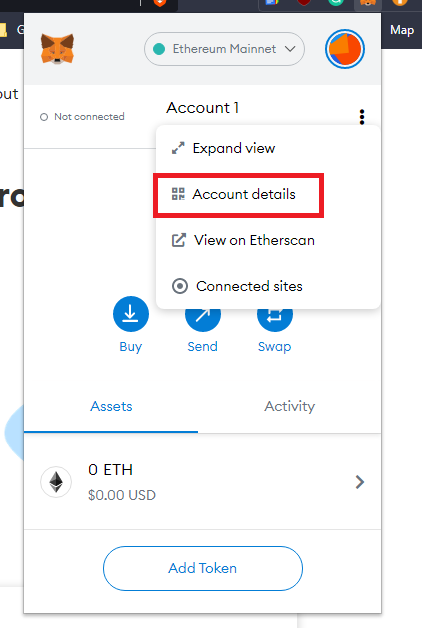
This will open a new window where you can export your private key after you have entered your MetaMask password. With the 12-word recovery phrase safely stored, your wallet is now set up.
2. Add funds to your MetaMask wallet
The most expedient way to add funds to your wallet is to open an account on a cryptocurrency exchange such as StormGain.
You will be required to go through KYC — Know Your Customer — in which you will have to either upload your national photo ID document take a selfie, or both.
Once complete, it’s only a matter of connecting your banking account/card to your crypto exchange account. Moreover, your crypto exchange account will also serve as your secondary crypto wallet, but one without a private key.
Once you’ve connected your bank account/card to your crypto exchange of choice, buy some ETH, then transfer it to your MetaMask wallet.
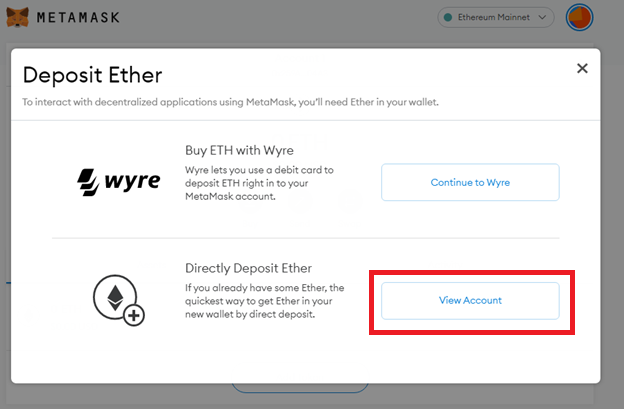
Clicking on the “View Account” button will open up your MetaMask’s address and QR code. Use this info to transfer the funds you bought on the crypto exchange. And that’s it!
3. Start selling and buying NFTs
There are dozens of NFT marketplaces. Some of the biggest ones are OpenSea, Rarible, CryptoSlam, AtomicAssets, and SuperRare.
Whichever one you visit, you will now be able to easily connect your MetaMask wallet to each site without having to create new accounts. For example, if you were to visit Rarible, which rewards you with RARI tokens when you sell and buy NFTs, in the upper right corner, you will see “Connect wallet.”

A window will open with a list of wallets from which you can pick one to use. Since you have already installed the MetaMask wallet, select it.
Now, select an NFT to purchase. When you click on the NFT, you will see your ETH balance or other payment methods. Once you have selected the payment method and amount, you will have officially purchased an NFT.

If you want to create and sell an NFT, almost all NFT marketplaces follow the same procedure:
- Selecting the “Create” option
- Choosing between single or multiple NFTs
- Uploading the file that will be minted as NFT, ranging from text to image, video, and audio
- Entering the info for the file to be minted — name, description, price, royalties
- Paying for the ETH gas fee
Once you finalize the last step and click “Start”, a MetaMask pop-up will ask you to sign the funds allocated for the fee. Click on “Sign” and your newly-minted NFT is listed for everyone to bid on!
NFTs: Tokenization in the modern era
NFTs represent objects or permissions in a way that reflects the modern digital era. Though they have had ups and downs, they have also remained a part of business and government products and services.
They differ in purpose, implementation, and from blockchain to blockchain. Now that you have read this guide on NFTs, you are equipped with the knowledge to go out and buy, sell, or even create NFTs of your own.
NFTs can be hard to keep up with, so why not join BeInCrypto’s Discord server to ensure you’re on top of everything?

